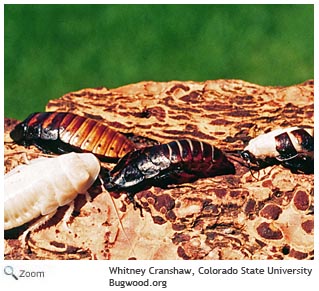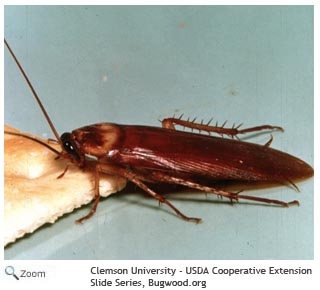Cockroaches like warm, humid, dark environments. They usually feed at night. Cockroaches have flattened bodies that make it easy for them to crawl into small spaces. Long antennae on the front of their heads help them feel their way around. Cockroaches have an interesting warning system. They have appendages on their underside called cerci . The cerci are very sensitive and help cockroaches detect vibrations and movement so they can scoot into a safe place. Cockroaches can live for up to a week without their heads. After a week they will die because without their heads they can't drink water. Most cockroach species live in the woods and feed on dead plants, but some species, like the American and German cockroaches, live in peoples' homes and feed on kitchen scraps and garbage. Adults are reddish-brown and are around two inches in length. Adult American cockroaches have wings and they can fly. They are usually found outdoors. They like warm damp areas and are often found in flower beds and under mulch in gardens. They will go inside homes looking for food. In homes, they can be found in damp places like around bathtubs, laundry hampers, and drains. When they are outdoors they eat leaves, wood, and fungi. Indoors they eat scraps of food. |
|||||||||||



